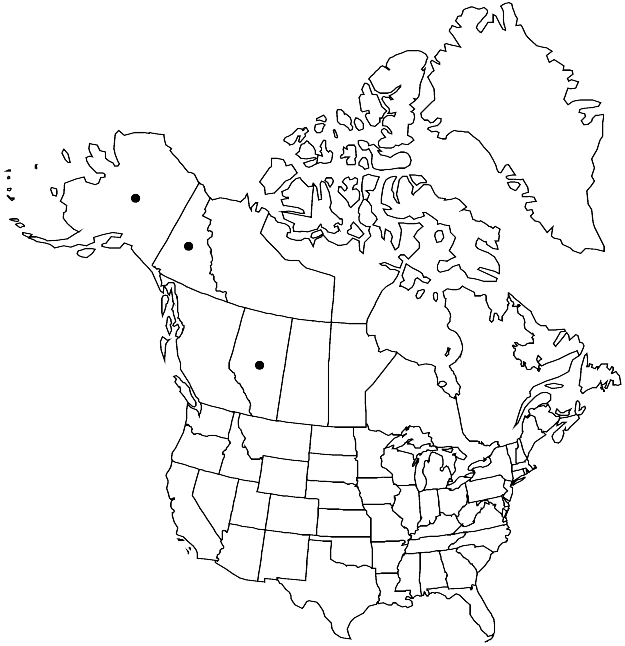Pohlia brevinervis
Kongl. Svenska Vetensk. Akad. Handl., n. s. 23(10): 51. 1890.
Plants very small to small, whitish, somewhat glossy. Stems 0.3–1.5 cm. Leaves erect-spreading, lanceolate, 0.6–1.4 mm; base not or scarcely decurrent; margins serrulate in distal 1/3; costa subpercurrent; distal medial laminal cells linear-rhomboidal, 60–110 × 6–9 µm, walls thin. Specialized asexual reproduction absent. Sexual condition dioicous; perigonial leaves to 3 mm; perichaetial leaves weakly differentiated, lanceolate. Seta orange-brown. Capsule inclined ± 180°, brown to stramineous, short-pyriform to urceolate, neck less than 1/3 urn length; exothecial cells isodiametric, walls sinuate; stomata superficial or slightly immersed; annulus absent; operculum short- to long-conic; exostome teeth dark to light brown or red-brown, triangular-acute; endostome light yellow, basal membrane 1/2 exostome length or slightly longer, segments tapered apically, distinctly keeled, broadly perforate, cilia long, nodulose. Spores 16–21 µm, finely roughened.
Phenology: Capsules mature spring (Apr–Jun).
Habitat: Clay soil along streams, ditches, glacial outwash
Elevation: low to high elevations
Distribution

Alta., Yukon, Alaska, Asia (e Siberia).
Discussion
Pohlia brevinervis is a rare and poorly known species that seems to combine characters of P. vexans (erect, glossy leaves on sterile plants) and P. atropurpurea (dark, reddish brown exostome teeth and somewhat immersed stomata). The leaves are distinctly more whitish than those of P. vexans. The exothecial cell walls of capsules of this species are somewhat collenchymatous.
Selected References
None.